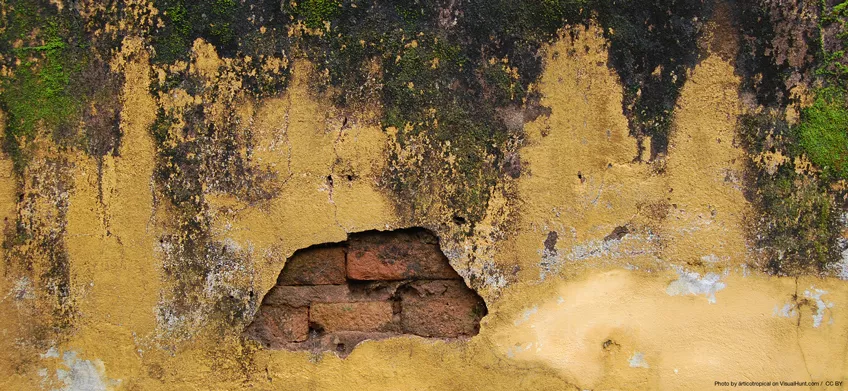
The damage caused by the cement
Many buildings suffer from moisture problems. This moisture comes from the water in the soil, which rises to the surface to evaporate. For old buildings, cement can be the main cause of these moisture problems. Cement was used all the way after the war, for its hardness, its quick setting ... Remember that a cement mortar and concrete, are completely waterproof with water vapor. In the case where the house is coated with a cement mortar, we can feel the ambient humidity. It can sometimes be seen on the walls in the form of efflorescence, saltpeter, corrosion, moss or lichen. Traces can be observed throughout the bottom of the wall in a continuous way, they fade with the height most often. The proliferation of molds can cause respiratory problems.
Traces of moisture and "perspirancy"
For lack of solutions, the traces could be masked, outside as inside. In addition, the presence of "watertight barriers", such as a concrete slab, a sidewalk, diverts the evaporation of water vapor. In fact, the humidity rises inside the walls by capillarity. The more porous the building materials, the greater the capillary rise. The frost producing the increase of the volume of the water, it favors the degradation of the frame. A cement coating on stone, deteriorates with time and winter frosts. To overcome this, there are various modern materials, such as chemical injections of chemicals, or "electro-osmosis" (inversion of the current produced by the capillary rise?!). They are expensive and try to influence nature by diverting the problem ... The land contains water vapor, so avoid "watertight barriers". Neolite offers a simple solution: breathable lime-based coatings promote the evaporation of moisture and regulate the humidity. This type of coating protects the frame, guarantees the durability of the structure, and helps to find the good quality of the indoor air.
